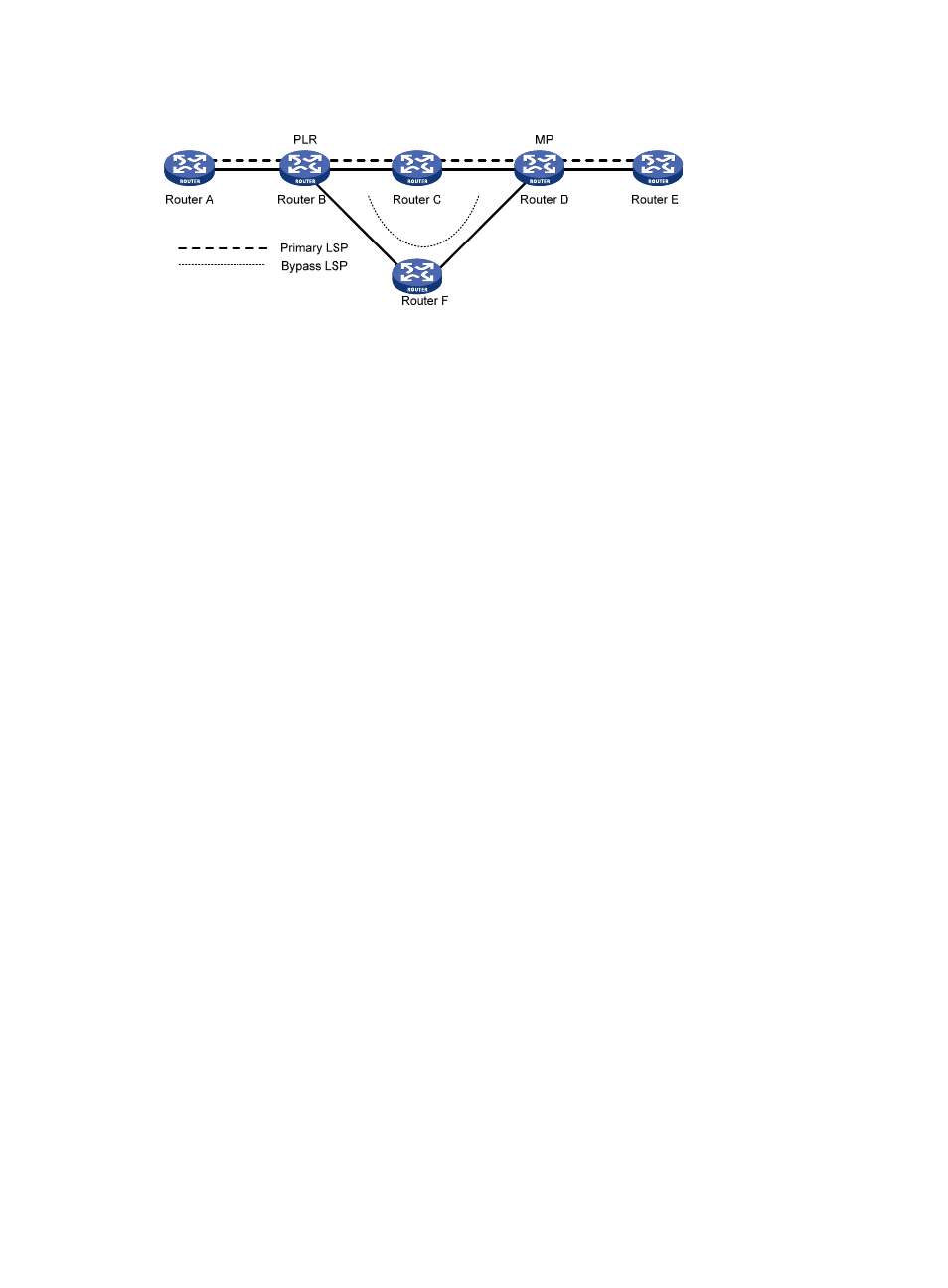Deploying frr, Ps for an mpls te tunnel, Figure – H3C Technologies H3C S10500 Series Switches User Manual
Page 107

96
Figure 30 FRR node protection
Deploying FRR
When configuring the bypass LSP, make sure the protected link or node is not on the bypass LSP.
As bypass LSPs are pre-established, FRR requires extra bandwidth. When network bandwidth is
insufficient, use FRR for crucial interfaces or links only.
PS for an MPLS TE tunnel
Protection switching (PS) refers to establishing one or more protection tunnels (backup tunnels) for a main
tunnel. A main tunnel and its protection tunnels form a protection group. When the main tunnel fails, data
is switched to a protection tunnel immediately, greatly improving the reliability of the network. When the
main tunnel recovers, data can be switched back to the main tunnel.
The device supports only 1:1 protection switching, where one protection tunnel is used to service one
main tunnel. Two tunnels exist between the ingress and egress, one main and one backup. Normally,
user data travels along the main tunnel. If the ingress finds a defect of the main tunnel by using a probing
mechanism, it switches data to the protection tunnel.
Protection switching may be command triggered or signal triggered.
1.
Command switching refers to a PS triggered by an externally configured switching command,
which can define the following switching actions:
•
clear—Clears all configured switching actions.
•
lock (lockout of protection)—Always uses the main LSP to transfer data.
•
force (forced switch)—Forces data to travel on the backup LSP.
•
manual (manual switch)—Switches data from the main LSP to the backup LSP or vice versa.
2.
Signal switching (Signal Fail) refers to a PS automatically triggered by a signal fail declaration. For
example, a PS occurs when BFD detects that an MPLS TE tunnel fails.
The following shows the priority of the externally configured switching actions and the signal fail
switching, in the descending order:
•
Clear
•
Lockout of protection
•
Forced switch
•
Signal fail
•
Manual switch
In practice, a switching command takes effect only when its priority is higher than that of a signal fail
declaration. When you have configured a switching action on your switch, to change the action to the
